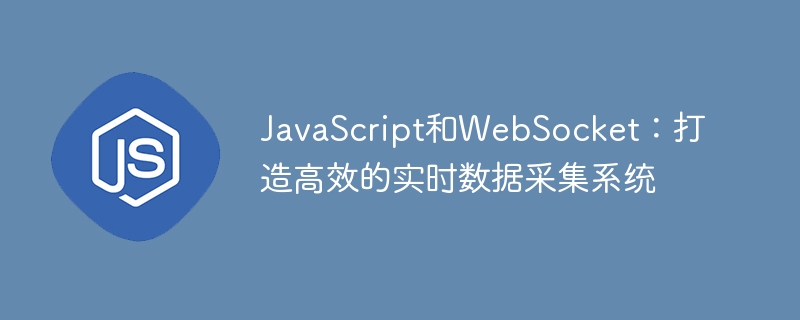

JavaScript and WebSocket: Create an efficient real-time data collection system
In modern web applications, the processing of real-time data is becoming more and more common. Since transmitting arbitrary real-time data requires avoiding delays, we need to use an efficient communication method. This article will introduce how to use JavaScript and WebSocket to build an efficient real-time data collection system, and provide specific code examples.
WebSocket is a full-duplex protocol that allows long-term connections between clients and servers. When the amount of data required is large, WebSocket often has advantages over using HTTP communication transport. In addition, the WebSocket protocol is used simultaneously with the HTTP protocol, which makes it easier to integrate into existing web applications.
The following is a basic implementation example:
First, create a WebSocket object:
var socket = new WebSocket('ws:// example.com/socket');
This will create an online WebSocket object, which establishes a long-term connection with the server. The URL 'ws://example.com/socket' points to the WebSocket server.
Next, listen to WebSocket events:
socket.addEventListener('open', function (event) {
console.log('WebSocket连接已建立');});
socket.addEventListener('message', function (event) {
console.log('Received:', event.data);});
socket.addEventListener('close', function (event) {
console.log('WebSocket连接已关闭');});
Here, the addEventListener() function is used to add an event handler to respond to WebSocket events. The 'open' event will be fired when the WebSocket connection is established, the 'message' event will be fired when data is received, and the 'close' event will be fired when the WebSocket connection is closed.
Finally, send/receive WebSocket data:
socket.send('Hello World'); // Send data
var data = JSON .parse(event.data); // Receive data
This simple example shows how to use JavaScript and WebSocket to establish a real-time connection from the client to the server. However, real applications require more code to handle more situations and technical details.
The following is a more complete WebSocket application example:
Server side
const WebSocket = require('ws');
const wss = new WebSocket.Server({
port: 8080
});
console.log("WebSocket server started...");
wss.on('connection', function(ws) {
console.log("WebSocket client connected...");
ws.on('message', function(message) {
console.log("Message received:"+message);
if (message === 'close') {
ws.close();
}
else {
wss.clients.forEach(function each(client) {
if (client.readyState === WebSocket.OPEN) {
console.log("Broadcasting:", message);
client.send(message); // 实现广播
}
});
}
});
ws.on('close', function() {
console.log("WebSocket closed...");
});
});
Client
var ws = new WebSocket('ws://localhost:8080');
console.log("WebSocket client started...");
ws.onmessage = function(msg) {
console.log("Received: " + msg.data);
};
ws.onclose = function() {
console.log("WebSocket closed...");
};
function send() {
var val = document.getElementById('input').value;
console.log("Sending: " + val);
ws.send(val);
}
function close() {
console.log("Closing WebSocket...");
ws.send('close');
ws.close();
}
This article provides basic JavaScript and WebSocket implementation examples, as well as complete server and client example code. Anyone can get started using WebSockets and start building their own real-time data collection applications.
The above is the detailed content of JavaScript and WebSocket: Create an efficient real-time data collection system. For more information, please follow other related articles on the PHP Chinese website!
